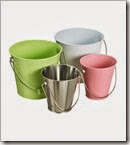Happy Halloween!
This year, if I stick my nose out of the house at all, I’ll be going as a late-middle age, slightly zaftig urban dweller. As such, I’ll be wearing black, accented by a natty Halloween scarf – if I can dig it out – and a pair of eye-popping orange socks.
I will not, of course, be going door to door, but may do a stroll around our neighborhood, where Halloween is pretty intensely observed, and a lot of folks decorate their houses. (We live in a small condo building which doesn’t get any Trick or Treaters, so we’ll have to get up the Hill to see the action.)
If I’m really up for the occasion, I’ll head up to my sister’s in Salem, where Halloween is, to put it mildly, an over the top, month long event. There, I’ll observe the day by drinking wine, helping give out candy to hundreds of Trick or Treaters, and scarfing down some Butterfingers.
Thanks to my sister Trish, I’ve already consumed my annual ration of candy corn. Talk about the perfect non-food. Yum!
But, wherever I find myself, Halloween will be pretty low key.
Whether I Halloween it up or not, I’ll find plenty of company.
The National Retail Federation predicts that 158m Americans will celebrate Halloween this year, spending on average $75 each. (Source: The Economist.)
That 158M represents almost exactly half of the population – yippee! yet another thing to divide into two nearly-equal camps – so, as I said, I’ll find plenty of company.
Perhaps a fifth of these will visit a haunted house.
Thirty-million-plus people will visit a haunted house? I know that “perhaps” is the operative word in that sentence, but thirty million people?
The last time I went to a haunted house, it was a backyard affair around the corner from my sister Trish’s in Salem. We paid $12 (in total) for my husband, my niece Molly, and I to get in, but Molly – she was still pretty little – chickened out, so we never got to see the scary stuff.
Backyard amateur haunted houses aside, this is a pretty big business:
Larry Kirchner, the publisher of Hauntworld.com, reckons there are about 2,000 such attractions, called “haunts”, in America. Accurate numbers are difficult to scare up, but the industry may have annual sales of as much as $1 billion.
Which is not to say that they’re necessarily profit makers.
The backyard, homemade setups, where expectations are pretty low – put your hand in the cold spaghetti, look at the quivering backlit brain jello mold, have the goofy dad in the Frankenstein mask jump out and scare you – may, in fact, be more profitable than the more sophisticated haunted houses.
The biggest haunts can make millions, but their expenses can reach seven figures, too—corpses don’t levitate on their own. (Or do they?)
In order to get the most boo for their buck, haunters use the latest technology. Where there is competition—there are at least half a dozen haunts in New York City alone—the standards are high. Hollywood special effects and animatronic ghouls are common. But warm-blooded labour, mostly in the form of actors, is often the biggest cost.
Then there are those pesky regulations…
Curious about what local haunted houses were available, I trucked over to Hauntworld.
I guess if the spirit – hah! – moved me, I could make my way to the Haunted Cornfield in Danvers, where, a couple of years back, a family of knuckleheads actually got lost and called 911. (Pink Slip had that one covered.) Or head out to Barrett’s Haunted Mansion in Abington. But I was most intrigued by Fall River’s Factory of Terror which, much to my delight, has opened a branch in Worcester.
So this is the way the economy works.
- Factories are the heart of the New England economy; responsible for creation of the lower middle class.
- Factories flee to Southern states, where folks will work for 50 cents an hour. (Jobs subsequently exported to countries where folks will work for 5 cents an hour. Jobs subsequently automated, so no one has a job.)
- Factories turn into condos, artists lofts, retail outfits, open offices for cool tech companies and, now, Factories of Terror.
What happens in a Factory of Terror? Do whirling machines take people’s arms off? Do workers get trapped in flames a la Triangle Shirtwaist? Or does everyone on the shop floor just get handed a pink slip and told to go home?
Happy Halloween!









